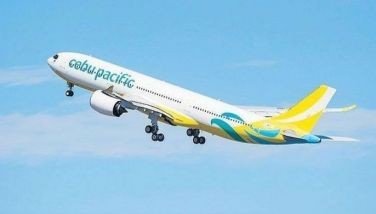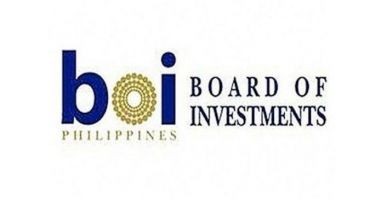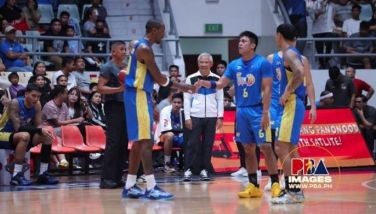Will SuperFerry ghosts haunt inquiry?

March 26, 2004 | 12:00am
It’s a gory business for any search and retrieval operation involving marine accidents. The SuperFerry 14 tragedy, which happened last Feb. 27, is no exception.
Relatives of missing passengers were appalled at the very slow response of the Philippine Coast Guard Authority (PCGA) and the reluctant logistics assistance of the Aboitiz controlled WG&A, owner of the ill-starred vessel.
Even the supposedly promised task force between the Coast Guard and WG&A has not materialized. Of not much help either was the special task force formed by the Office of the President after the families of the victims made desperate pleas to the government through the media.
As disheartened relatives – many of who still had not a single clue as to what happened to their missing kin – made their agonizing trip back home, the Special Board of Marine Inquiry (SBMI) started its formal investigation of the sea tragedy.
After media hype, perilous ships are back.
In the meantime, media coverage of this latest maritime disaster has started to wane. Coverage of the story, as expected, has been pushed to the inside pages. The SuperFerry 14 tragedy has become just another incident, a statistic that is added to a growing list of shipping disasters.
It seems that we never learn. Each maritime accident that has occurred during the past 10 years and claimed more than 500 lives and millions of pesos worth of damage to property and to the environment undergoes the same futile cycle.
We never learn. A couple of days of media hype on the search, rescue and retrieval operations is followed by weeks of a long slow-moving inquiry. After a while, it is business as usual for the negligent ship owners as they ply hand-me downs vessels and continue to expose the riding public to the perils of the Philippine nautical highways.
It appears that the wounds impaled by the latest tragedy involving the Aboitiz-owned SuperFerry 14 are now fading scars. Unless, there are really ghosts and they start haunting those who are responsible for our unsafe seas.
We do not want to pre-empt the inquiry being conducted of the SuperFerry 14 tragedy. There are, however, questions that many are raising regarding the fire that caused the sinking of the ferry boat.
For instance, why did the fire spread so fast? Why was it so uncontrollable so quickly? The heat generated within a short period of time must have been so intense as to affect the ship’s structure causing it to list on one side and eventually sink.
What happened to the fire sprinkler system and other fire fighting facilities that are prescribed to be on board and fully operational? What about the fire fighting team which is a critical and standard component of a ship’s crew?
We understand that SuperFerry 14 was formerly an old ferryboat that was reconfigured and refurbished to increase passenger capacity and accommodate other amenities. The question now is whether fire resistant materials were used as prescribed by international safety standards. Or, were the construction materials used merely plain plywood and sub-standard materials that could easily catch fire?
Media reports about the possibility of a terrorist act as the cause of the tragedy alarmed several sectors.
Sources in the insurance industry are saying that such a finding would considerably increase insurance premiums as Lloyds (a very influential entity in the insurance business) may classify the Philippines as a "war zone" thus making war risk insurance coverage more costly.
If this happens, international shipping companies will by-pass Philippine ports unless they are compensated for the increase in insurance cost. This scenario will not only be a mud in the face of the "Strong Republic Nautical Highway," but also the back-breaker of our fragile economy.
Whoever had the bright idea of using a terrorist as a bogeyman to cover up faults of the ship owner or the ship captain or even any responsible government officials should be fed immediately to the sharks roaming in Philippine waters.
Congratulations to the officers and members of the Society of Philippine Motoring Journalists (SPMJ) for a successful "golf-for-a-cause" event held recently at the Riviera Golf and Country Club.
Philippine Star’s Brian Afuang and Ray Butch Gamboa, my brother, together with several other motoring journalists established the SPMJ to improve traffic and road safety attitudes of young Filipino drivers. The Society will produce teaching modules and audiovisuals on traffic and road safety education geared toward the youth.
SPMJ will also lobby aggressively in the next Congress for legislative action requiring the inclusion of traffic and road safety education in the curriculum for high school levels.
"Isyung Kalakalan at Iba Pa" on IBC News (4:30 p.m. and 10:30 p.m., Monday to Friday) ends today the discussion of various issues and concerns affecting the future of our OFWs, the recognized modern heroes of a locally struggling economy. Are our workers geared towards changing requirements in the international labor market? Are training programs in place to provide aspiring OFWs new skills needed by other countries? Watch it.
"Breaking Barriers" on IBC (11 p.m. every Wednesday) will start a series of episodes that will feature candidates in the coming May elections. Former senator and National Defense Secretary Orly Mercado is the featured guest on Wednesday, 31st March 2004. Watch it.
Should you wish to share any insights, write me at Link Edge, 4th Floor, 156 Valero Street, Salcedo Village, 1227 Makati City. Or e-mail me at [email protected]. If you wish to view the previous columns, you may visit my website at http://bizlinks.linkedge.biz.
Relatives of missing passengers were appalled at the very slow response of the Philippine Coast Guard Authority (PCGA) and the reluctant logistics assistance of the Aboitiz controlled WG&A, owner of the ill-starred vessel.
Even the supposedly promised task force between the Coast Guard and WG&A has not materialized. Of not much help either was the special task force formed by the Office of the President after the families of the victims made desperate pleas to the government through the media.
As disheartened relatives – many of who still had not a single clue as to what happened to their missing kin – made their agonizing trip back home, the Special Board of Marine Inquiry (SBMI) started its formal investigation of the sea tragedy.
After media hype, perilous ships are back.
In the meantime, media coverage of this latest maritime disaster has started to wane. Coverage of the story, as expected, has been pushed to the inside pages. The SuperFerry 14 tragedy has become just another incident, a statistic that is added to a growing list of shipping disasters.
It seems that we never learn. Each maritime accident that has occurred during the past 10 years and claimed more than 500 lives and millions of pesos worth of damage to property and to the environment undergoes the same futile cycle.
We never learn. A couple of days of media hype on the search, rescue and retrieval operations is followed by weeks of a long slow-moving inquiry. After a while, it is business as usual for the negligent ship owners as they ply hand-me downs vessels and continue to expose the riding public to the perils of the Philippine nautical highways.
It appears that the wounds impaled by the latest tragedy involving the Aboitiz-owned SuperFerry 14 are now fading scars. Unless, there are really ghosts and they start haunting those who are responsible for our unsafe seas.
For instance, why did the fire spread so fast? Why was it so uncontrollable so quickly? The heat generated within a short period of time must have been so intense as to affect the ship’s structure causing it to list on one side and eventually sink.
What happened to the fire sprinkler system and other fire fighting facilities that are prescribed to be on board and fully operational? What about the fire fighting team which is a critical and standard component of a ship’s crew?
We understand that SuperFerry 14 was formerly an old ferryboat that was reconfigured and refurbished to increase passenger capacity and accommodate other amenities. The question now is whether fire resistant materials were used as prescribed by international safety standards. Or, were the construction materials used merely plain plywood and sub-standard materials that could easily catch fire?
Sources in the insurance industry are saying that such a finding would considerably increase insurance premiums as Lloyds (a very influential entity in the insurance business) may classify the Philippines as a "war zone" thus making war risk insurance coverage more costly.
If this happens, international shipping companies will by-pass Philippine ports unless they are compensated for the increase in insurance cost. This scenario will not only be a mud in the face of the "Strong Republic Nautical Highway," but also the back-breaker of our fragile economy.
Whoever had the bright idea of using a terrorist as a bogeyman to cover up faults of the ship owner or the ship captain or even any responsible government officials should be fed immediately to the sharks roaming in Philippine waters.
Philippine Star’s Brian Afuang and Ray Butch Gamboa, my brother, together with several other motoring journalists established the SPMJ to improve traffic and road safety attitudes of young Filipino drivers. The Society will produce teaching modules and audiovisuals on traffic and road safety education geared toward the youth.
SPMJ will also lobby aggressively in the next Congress for legislative action requiring the inclusion of traffic and road safety education in the curriculum for high school levels.
Should you wish to share any insights, write me at Link Edge, 4th Floor, 156 Valero Street, Salcedo Village, 1227 Makati City. Or e-mail me at [email protected]. If you wish to view the previous columns, you may visit my website at http://bizlinks.linkedge.biz.
BrandSpace Articles
<
>
- Latest
- Trending
Trending
Latest
Trending
Latest
Recommended





























